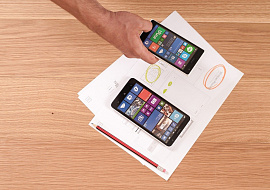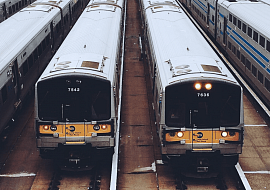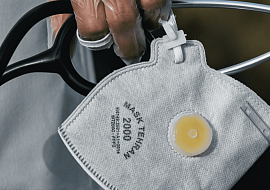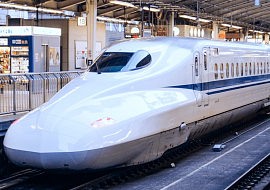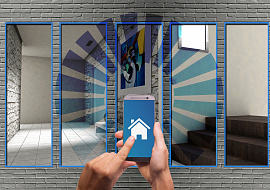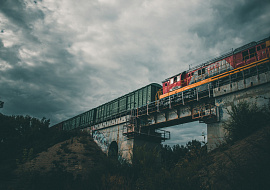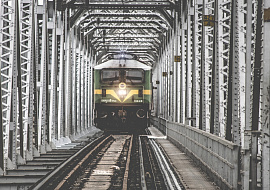Using apps, the distributed staff will be able to track the state of the equipment in real-time. Sensors that measure some parameters of the equipment then send this info to the cloud, but mobile apps can receive it as well. Also, through the integration of analytical tools, mobile applications can receive analytical reports in a convenient representation of graphics or diagrams. Based on these data, the technician can see the most suitable time and plan predictive maintenance more accurately.
Getting ready to develop a mobile railway app: What you need to know first
With the highly structured nature of most railway companies, the implementation of innovative solutions might induce various concerns, such as a need to restructure the business model or safety risks on the railroad. Despite this, the benefits of these solutions increasingly outweigh the doubts, triggering multiple North American rail companies to go digital. When starting this process, they often choose to develop a mobile railway app first because it is, shall we say, the most “innocuous” for the company’s structure.
Mobile rail applications are one of the main components of a digital railroad. They are, at least, visible. When big railway players announce their main innovations, the benefits may be hard to verify. A digital signaling system, for example, might be a revolutionary invention, but its benefits only become apparent in a reduction of incidents after its implementation. When it comes to mobile rail applications, they are easy to check and get reviews because they are the closest to the end-user. It is of importance in customer interaction both for passenger and freight traffic. At this point, if the company needs to increase the user experience, we recommend they develop a mobile railway app. Nonetheless, user experience is not the only reason that might persuade the rail company to implement mobile solutions. Continue reading as PSA reveals everything you need to know before exploring a mobile rail application.
Why do companies decide to develop a mobile railway app?
You can deploy virtually any IT solution in the mobile environment. The question is, which ones meet your business goals? Many businesses are concerned about the cost and complexity of mobile app development for rails. However, it often is more affordable to develop the app than to operate in its absence.
As mentioned above, rail companies are highly structured, which means they have strict regulations for business operations, train movement, transportation processes, etc. For the train to move safely, the company needs to provide safe operation for the control system, back office, wayside equipment, in-cab system, and the respective interactions. So, do we need mobile solutions there? While their implementation is not obligatory their benefits are sufficiently compelling for consideration.
Among the many benefits that mobile solutions bring to companies, the following are the most relevant for railway:
-
Time-saving operations
-
Having more control
-
Increasing the customers’ trust
-
Increasing the visibility of the company
-
Increasing the safety of the transportation
Implementing applications for the railroad can make it both safer and more convenient. Smartphones have enough built-in functions to support the functionality of railway applications. For instance, high-resolution cameras allow them to take photos at each stage of the equipment repair; scanners that can read QR codes or GPS that will help not to get lost; memory power that allows them to download critical data, and so on. They support various communication protocols, such as RFID, Wi-Fi, Bluetooth, and more, that ease the integration with other devices.
As we can see, mobile apps are indispensable when you need to respond quickly. Railroad operations often require them to solve emerging issues and avoid delays in real-time. How exactly? Let’s find it out further.
Mobile applications in rail logistic operations
When the railroad compani is a participant of the supply chain, it can also suffer from the typical logistic issues such as cargo delay and loss of the visibility. If the company doesn’t want to pay damages, it must solve emerging issues immediately. Fortunately, modern technologies like mobile allow us to minimize these risks. The company can get the most tangible benefits when implementing mobile applications to operate the IoT ecosystem on the railroad. When the train and rail infrastructure objects have sensors, the operator can easily monitor their status and train location more accurately. When this report-based info is sent to the mobile app, the responsible person can solve the issue immediately, while the client can monitor the situation online. As a result, you can avoid unfounded accusations from the client and reduce the risk of cargo delays.
In the past, the transportation sector would implement mobile apps for providing mainly navigation and location-based services only. Today, they are capable of:
- showing the current cargo status
- showing the traffic data
- route planning
- ridesharing
- providing technical support
By getting access, the client will also be able to monitor the current state of the cargo, see collisions if they happen, and react quickly if their participation is needed. This approach makes a rail company more attractive as a partner because it makes the supply chain more transparent for the client. Even in case of cargo delays for reasons beyond company control, the client will always be able to monitor them. Additional functions may be installed on these applications to make them more convenient for the client, such as the ability to make payments and store post-delivery info.
In the glaze of the merger of the railroads in North America, the rail transportation industry may open new horizons. The implementation of mobile solutions there might seem like a look into the future because they make rail more attractive for companies. They ensure the communication flow between small cooperation partners operating in the first mile, last mile, and transit on behalf of a lead railway undertaking. In this way, the company can manage the fleet and inventory and organize effective time management, thus eliminating paperwork.
Maintenance & Signaling system operations
The fundemental point here is to introduce mobile applications into the workflow of technical staff, meaning to transfer the work of particular employees into digital. These applications would give employees deeper insights into equipment status and provide new data in real-time. The ultimate goal is to provide a better level of safety on the railroad. Although railway accidents happen rarely, their consequences sometimes are catastrophic. The reason for many cases is often human error caused by maintenance of the train, railroad equipment, and infrastructure, as well as an abundance of paperwork that the railway staff handles daily.
The main advantage of the mobile applications for engineers and technicians on the railroad is a real-time connection between the control center and maintenance staff. It significantly simplifies and improves the maintenance of the railroad, offering the staff not no wait for scheduled maintenance, but to fix the issue if it is needed. It allows maintenance staff to receive, review, and action faults as they occur, decreasing response and repair time and increasing network performance, the efficiency of resource usage, and uptime. However, this is also possible if the train has the Internet of Things sensors.
Mobile application for the railway employees can provide:


Technicians are often working onsite, so it would be more convenient for them to receive the info about malfunctions immediately. Thus, they will be able to see the details of the issue and fix it in a shorter time.

To provide high-quality maintenance, technicians need to see all the history of errors and repair actions of particular equipment. In some cases, the actions taken before will help the staff to identify the cause of the fault and decide how to fix it.

This option is more useful for the operators that need to oversee the technical staff. It would be much easier to manage the technical workers by getting quick reports from their mobile applications.
The same goes for rail signaling applications. Today, some services ease the signaling operations. Mobile applications can be valuable because they provide the opportunity for immediate action in case of failure. Regarding the maintenance of the signaling equipment, the flow is the same as described above. It provides all interested parties the opportunity to get accident and incident reports, messages about the signaling equipment status, and necessary documentation. A mobile hand-held device enables rail workers to operate locomotives and switches if it is required. It helps them stay on schedule, foresee and avoid incidents, and respond to unavoidable incidents better and faster.
Need help?
Before you develop a mobile railway app, you’ll want to decide on the functions you need to meet your business goals. For example, will the app will have an opportunity to add photos, use GPS, or store all the necessary technical info? Most likely, you will want to transfer all the administrative work into mobile applications and will need to implement a work log and route planning tools. Doing so will help save time collecting the necessary information and filling out papers. The app can be developed to fit your specific business processes, allowing to control all the aspects including route planning, station navigation, employess actions, and more.
Apps for passengers
Although US rail passenger transportation is not as widespread, mobile apps could attract people to travel by train. Since people like to choose their method of transportation based on the most comfortable option, mobile applications can facilitate buying tickets and simultaneously collect information about the trip to be used later.
With smartphone usage on the rise, travelers’ reliance on mobile apps to simplify their journey has naturally increased. According to TravelPerk, 57% of business travelers want a single app for all their travel planning and booking needs, including ticket purchases, passes, and packaged trips with their mobile devices. With this in mind, it’s no surprise that more travel-related apps continue to appear. The most popular applications enable rail passengers to quickly plan their travel by booking and purchasing train tickets, boarding via m-ticket, checking schedules and train status, getting destination updates, requesting and managing onboard services, and viewing personalized offers and recommendations. In other words, these apps free passengers from long lines and hassle, thus making the travel process a pleasure.
Conclusions
Safety has long been main priority of every rail project. Mobile applications can simplify operational processes on the railroad and improve user experience. With an app, it is easier and more efficient to perform planning, briefing, and daily safety reporting, which leads to increased safety levels. When it comes to the rail industry, the most relevant areas to use mobile applications are logistics, maintenance, and passenger transportation.
If a rail company wants to develop a mobile railway app, they would want to:
- Identify the business goals. Analyze bottlenecks in current operational processes in the railroad and identify which of them can be solved with the installation of mobile applications.
- Identify the functions of the desired app. If the business strategy has been created correctly, it will be clear what functions your app should contain.
- Come with a budget. Mobile application development can be an affordable solution for many companies. However, it all depends on functions, design, UX, etc. So, we advise you to implement only necessary functions in your app, while not not taking away from user experience.
- Conduct offline support. Make sure, even in case of Internet failure, the client will be able to contact you.
In addition to future cost savings, streamlined planning and delivery, and better safety reporting, implementing mobile solutions allows the rail industry to be a safer and more compliant work environment, whether it be on or near the line.







